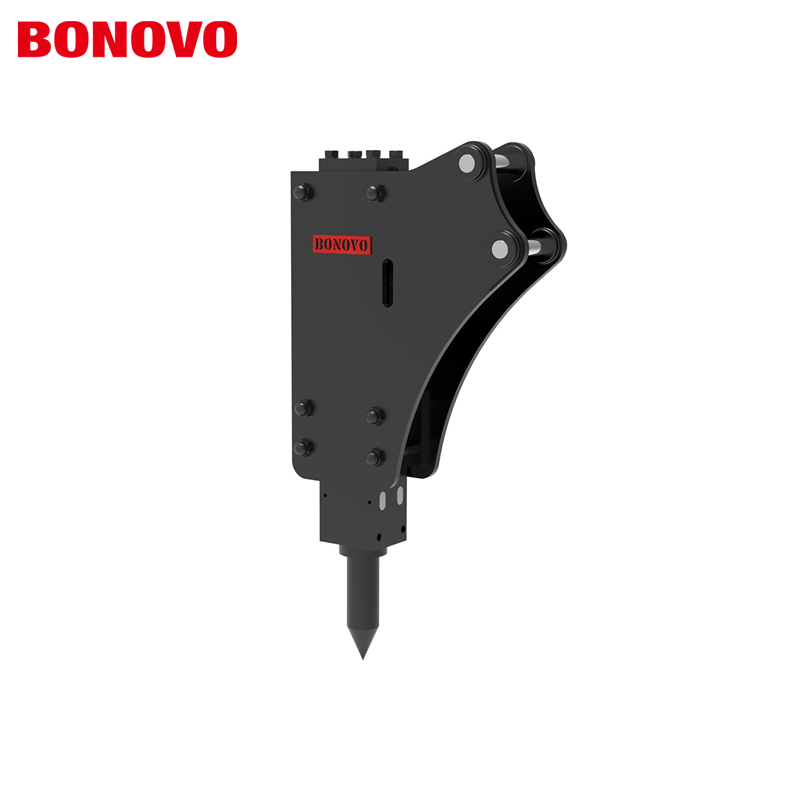
Root excavation: a complete guide to preparation and operation
When performing root excavation, adequate preparation and standardized operation procedures are the key to ensuring efficient and safe completion of the operation. The following will elaborate on the key points of root excavation in the preparation stage and operation process.
1. Preparation for root excavation
1. Adjust the position of the excavator body: The first task is to accurately adjust the excavator body to the appropriate position. This step is like laying the foundation for subsequent operations. The proper position can enable the excavator to maintain the best stability and operational convenience during the excavation process, creating conditions for efficient excavation.
2. Set up a small mound in front of the crawler: Before the excavation begins, carefully build a small mound in front of the crawler. This move is crucial. It can enable the walking device to operate in a stable state, just like providing a solid and reliable "base" for the excavator's operation, effectively avoiding the shaking of the fuselage caused by uneven ground or vibration of the excavation action, and ensuring the smooth progress of the excavation work.
3. Use small mounds to improve safety and vision: When the excavator body is safely driven onto the small mound in front of the crawler, it will bring dual benefits. On the one hand, it can effectively prevent the rolling gravel from causing impact damage to the body after the body collides with the rock, adding a layer of safety protection for the excavator; on the other hand, the elevated position of the body makes the operator's field of vision wider, and can observe the situation at the excavation site more clearly, predict possible problems in advance, and further improve the safety and accuracy of the operation.
2. Operational precautions for root excavation
1. Avoid improper impact excavation: When performing root excavation operations, it is strictly forbidden to use the force of the arm falling for impact excavation. This improper operation may not only cause serious damage to the mechanical structure of the excavator and shorten the service life of the equipment, but may also cause excavation to lose control and lead to safety accidents.
2. Ensure that the tooth tip is effectively inserted: Do not dig blindly when the tooth tip is not inserted. If the tooth tip fails to be effectively embedded in the excavation object, not only will efficient excavation fail, but the bucket may also be subjected to abnormal stress, accelerate bucket wear, and even cause bucket damage.
3. Reasonably excavate close to the rock pile: When excavating under the root of the excavator, the vehicle body should be as close to the edge of the rock pile as possible. This can maximize the excavation efficiency of the excavator, reduce excavation dead angles, and improve excavation efficiency.
4. Utilize the principle of natural crushing: When concentrating on excavating the root part, as the excavation goes deeper, the remaining rocks on the working surface will naturally break due to the change of the root support structure. Operators should cleverly use this principle to reasonably plan the excavation sequence and strength to achieve more efficient excavation operations.
5. Pay attention to the impact of upper excavation on transportation: During the upper excavation process, special attention should be paid to the fact that if the rocks at the root are retained, it is very likely to hinder the subsequent handling operations of the wheel loader. Therefore, the excavation progress should be reasonably arranged during the excavation process to ensure that the working surface condition after excavation will not cause difficulties for subsequent handling work.
6. Clean up the residue on the working surface: The excavator should not only excavate the hard part remaining at the bottom of the working surface, but also collect the excavated gravel as much as possible on the rock pile. At the same time, after completing the root excavation work, it is important to ensure that there is no residual gravel and stone chips under the working surface. This not only helps to keep the work site clean and orderly, but also prevents the residual gravel from causing potential damage to subsequent work equipment, ensuring the continuity and safety of the work.
7. Excavation strategy for hard roots: When excavating hard roots, excavation should be started from the end. This excavation method enables the excavator to exert force more effectively, gradually overcome the hard parts, avoid excavation difficulties caused by improper excavation angles or uneven force, and improve excavation efficiency and success rate.
8. Dealing with unexcavable locations: If you encounter a location that cannot be excavated directly, lateral blasting can usually be used. The specific operation is to accurately make blasting holes on the rock surface, and through reasonable blasting design and operation, the hard rock is broken to create conditions for subsequent excavation operations. However, when performing blasting operations, relevant safety regulations must be strictly observed to ensure the safety of personnel and equipment.
keywords:Mini crawler excavator,Mini crawler excavator attachments,Excavator attachments,Crawler excavator,Mini excavator purchase
Choose BONOVO for high-quality, customizable brush cutters for skid steers with fast delivery. Contact us today to discover how our superior products can enhance your land management tasks!

 Hot News
Hot News2024-09-18
2024-09-18
2024-07-03
2024-03-08
2024-03-08
2024-03-08